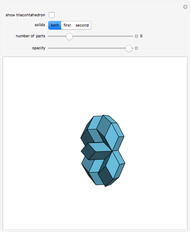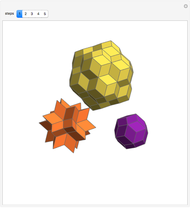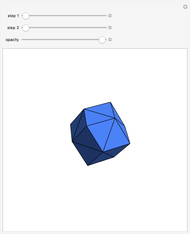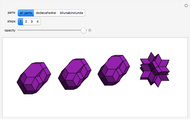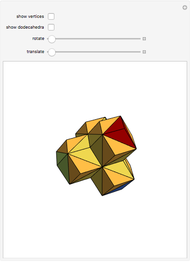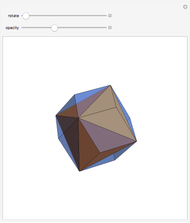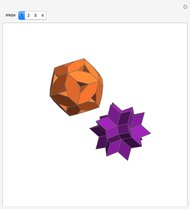Dissection of a Rhombic 210-hedron into a Combination of Icosahedron and Truncated Dodecahedron

Requires a Wolfram Notebook System
Interact on desktop, mobile and cloud with the free Wolfram Player or other Wolfram Language products.
The rhombic 210-hedron that consists of 90 prolate golden rhombic rhombohedra and 70 obtuse golden rhombic rhombohedra is dissected and reassembled into a combination of the icosahedron and the truncated dodecahedron.
Contributed by: Izidor Hafner (March 2011)
Open content licensed under CC BY-NC-SA
Snapshots
Details
In [1] J. H. Conway, C. Radin and L. Sadun applied their theory of geodetic angles to the non-snub Archimedean polyhedra, proving that some combinations of Platonic and Archimedean solids can be decomposed to a cube. The truncated dodecahedron is an example.
[1] J. H. Conway, C. Radin, and L. Sadun, "On Angles Whose Squared Trigonometric Functions Are Rational," Discrete & Computational Geometry, 22(3), 1999 pp. 321–332.
[2] I. Hafner, "Live 3D Animations to Solution of Conway-Radin-Sadun Problem," Visual Mathematics, 9(1), 2007.







